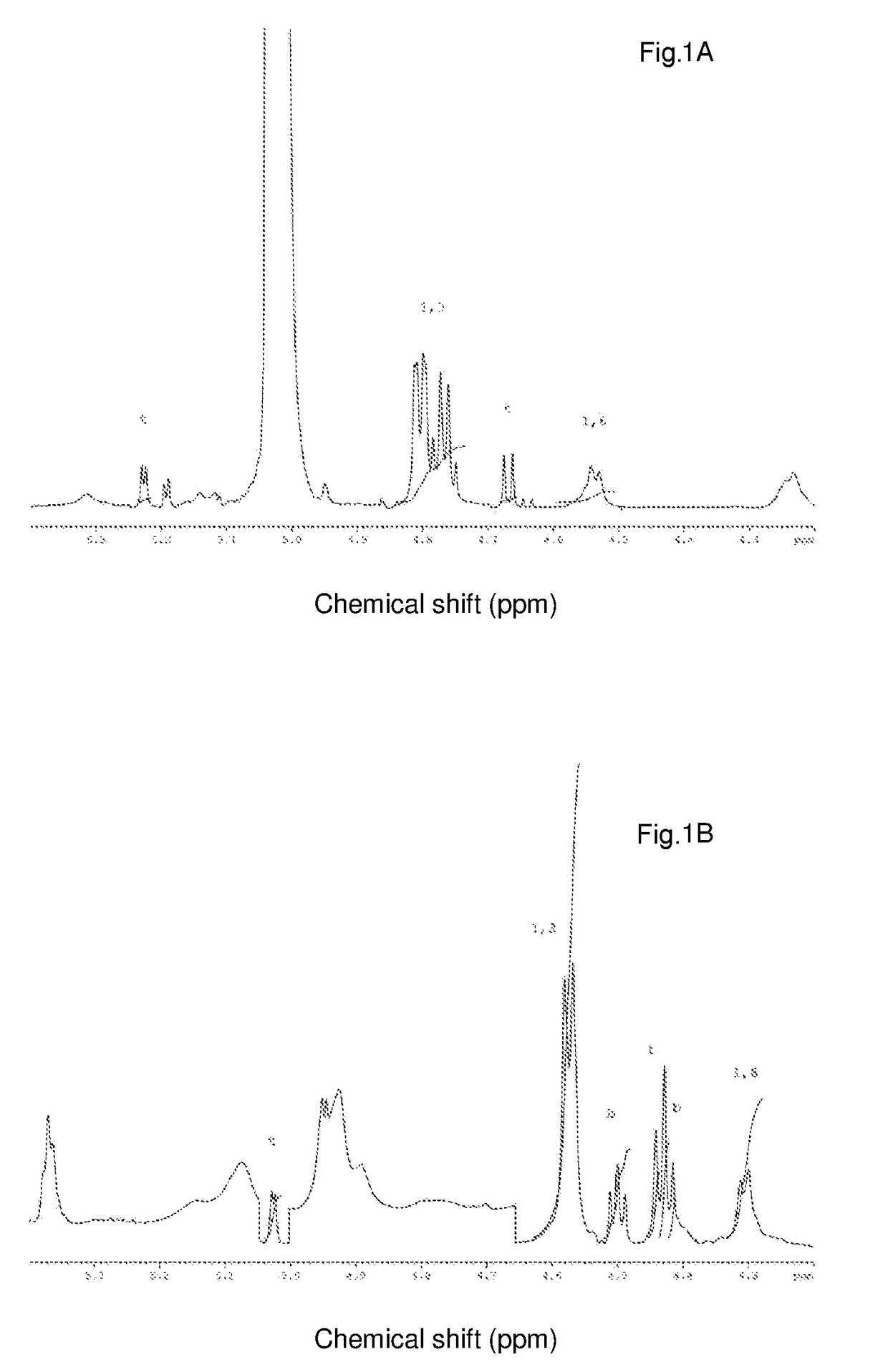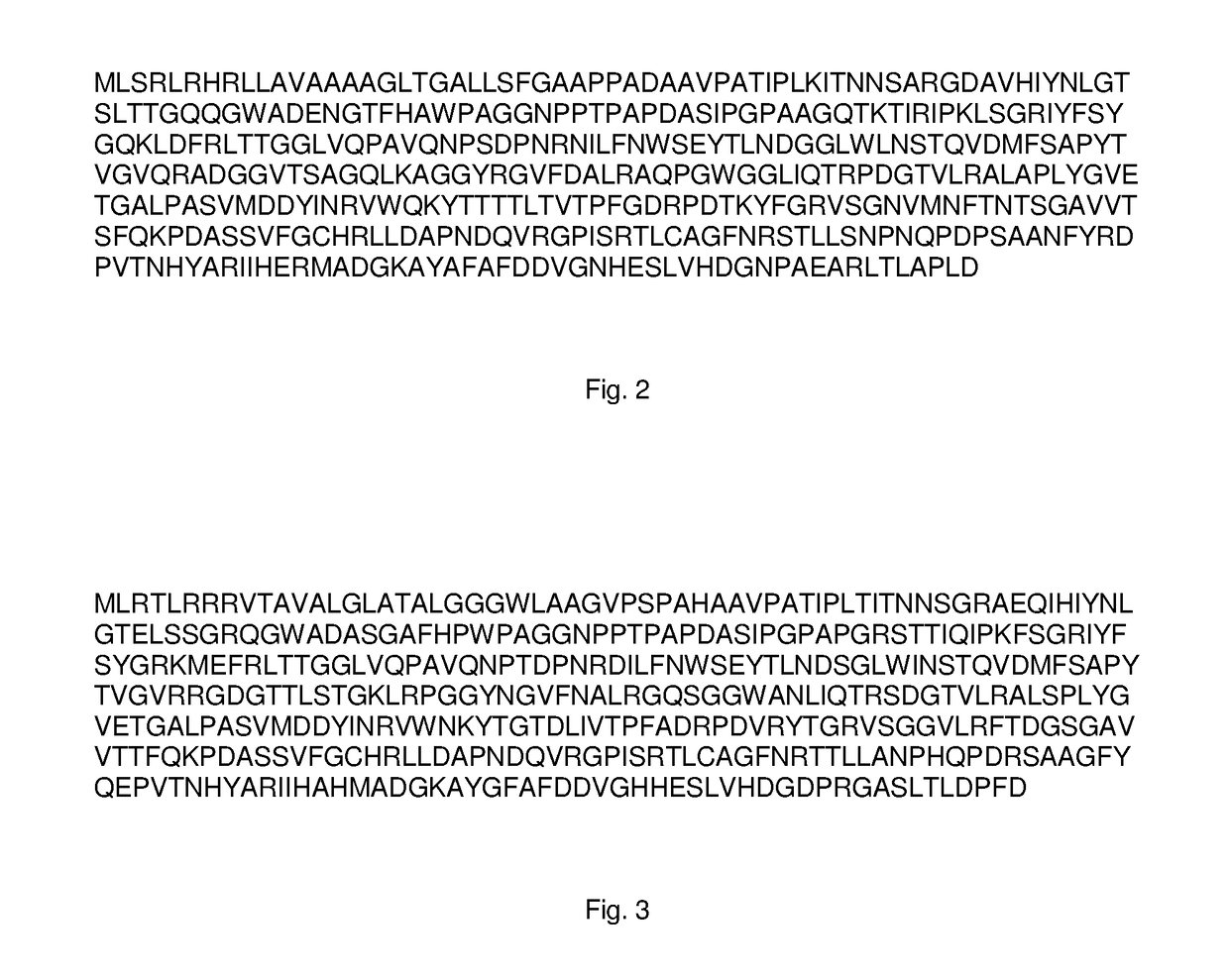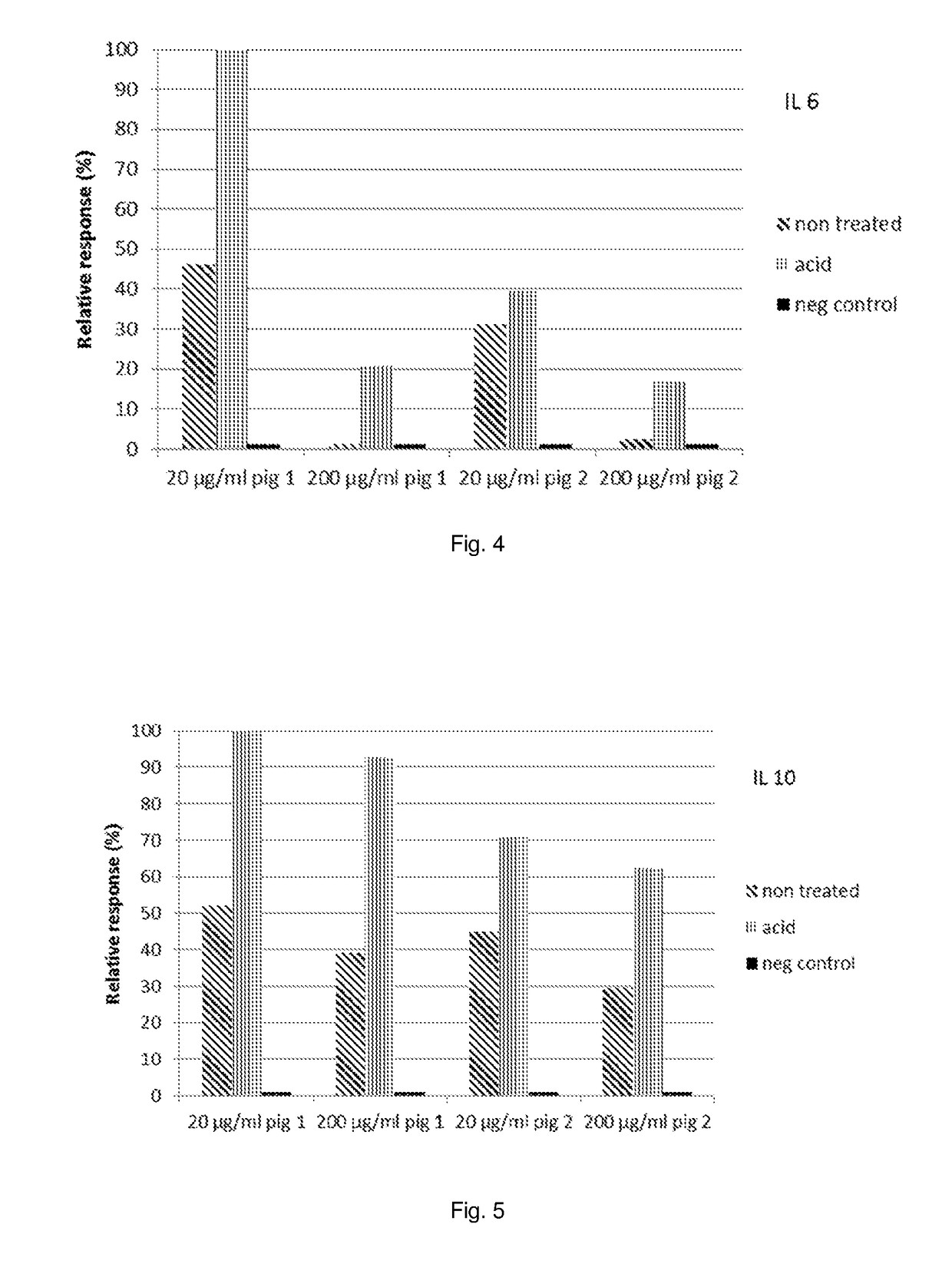Process for the treatment of yeast cell walls with a laminaripentaose producing beta-1,3-glucanase
a technology of laminaripentaose and laminaripentaose, which is applied in the field of process for the treatment of yeast cell walls comprising 1, 3glucans, and can solve problems such as loss of health properties
- Summary
- Abstract
- Description
- Claims
- Application Information
AI Technical Summary
Benefits of technology
Problems solved by technology
Method used
Image
Examples
example 1
Amino Acid Sequence of the Laminaripentaose-Producing-β-1,3-Glucanase Present in Denazyme Gel-L1.
[0090]1.1 Digestion of the Laminaripentaose-Producing-β-1,3-Glucanase Present in Denazyme Gel-L1 with Trypsin.
[0091]The protein present in Denazyme GEL-L1 was precipitated with TCA (trichloroacetic acid) by diluting it 1:1 with 20% TCA. The mixture was incubated for 30 minutes at 4° C. and the protein was collected by centrifugation. The protein pellet was washed with ice cold acetone, re-collected by centrifugation and dissolved in a small volume 50 mM sodium hydroxide. The protein solution was diluted 10-fold with 100 mM ammonium bicarbonate. Disulphide bridges were reduced by addition of 5 mM final concentration dithiothreithol and 30 minute incubation at 25° C. Cysteines were alkylated by addition of 5.5 mM final concentration iodoacetamide and 30 minute incubation at 25° C. in the dark. Alkylation was quenched by exposing the sample to light, prior to digestion with trypsin. Trypsin...
example 2
[0097]Solubilisation of Yeast Cell Wall Glucans with Acid and Alkali
[0098]Isolated yeast cell walls are commercially available from various suppliers. For the present example, isolated yeast cell walls were obtained as a side product of yeast extract production. The yeast cells walls contained 31.7% glucans based on dry matter.
[0099]The yeast cell walls were incubated for 16 hours at 95° C. and at a pH value indicated in the table below. After the incubation, the sample was heated for 15 minutes at 100° C. and after lyophilisation, the yeast cell walls were dissolved in D2O or DMSO as described in the Materials and Methods.
TABLE 6Water soluble β-DMSO solubleglucansβ-glucansRatioRatioIncubationpH% dmRel %% dmRel %DMSO / waterwater / DMSOControlNoN.D.*N.D.*4.213.2%∞0incubation12.01.75.3%9.530.0%5.70.1823.00.92.8%6.721.1%7.50.1335.5N.D.*N.D.*4.313.5%∞0410.0N.D.*N.D.*2.7 8.5%∞0512.0N.D.*N.D.*N.D.*N.D.*n.a.n.a.*N.D. = not detectable (i.e. below the detection limit)
[0100]The results in Table ...
example 3
Solubilisation of Yeast Cell Wall Glucans Using Laminaripentaose-Producing-β-1,3-Glucanase
[0102]Isolated yeast cell walls were incubated for 16 hours at 55° C. and at pH=5.5 with or without the indicated amounts of Denazyme GEL-L1 (wt % dm means “weight percent” of the enzyme solution based on yeast cell wall dry matter—for instance, 0.01 wt % dm is equal to 0.1 mg Denazyme solution per gram dry weight yeast cell walls). After the incubation, the sample was heated for 15 minutes at 100° C. and after lyophilisation, the yeast cell walls were dissolved in D2O or DMSO as described in the Materials and Methods. After incubating for 30 minutes at 50° C., the samples were centrifuged for 10 minutes and the supernatant analysed by NMR as described in the Materials and Methods.
TABLE 7Water solubleDMSO soluble[Denazyme]β-glucansβ-glucansRatioRatioIncubationin mixture% dmRel %% dmRel %DMSO / waterwater / DMSOControlNoN.D.*N.D.*4.213.2%∞0incubation60.0N.D.*N.D.*3.811.9%∞070.01 wt % dmN.D.*N.D.*12....
PUM
| Property | Measurement | Unit |
|---|---|---|
| temperature | aaaaa | aaaaa |
| temperature | aaaaa | aaaaa |
| temperature | aaaaa | aaaaa |
Abstract
Description
Claims
Application Information
 Login to View More
Login to View More - R&D
- Intellectual Property
- Life Sciences
- Materials
- Tech Scout
- Unparalleled Data Quality
- Higher Quality Content
- 60% Fewer Hallucinations
Browse by: Latest US Patents, China's latest patents, Technical Efficacy Thesaurus, Application Domain, Technology Topic, Popular Technical Reports.
© 2025 PatSnap. All rights reserved.Legal|Privacy policy|Modern Slavery Act Transparency Statement|Sitemap|About US| Contact US: help@patsnap.com



